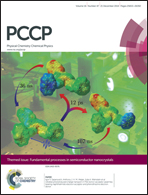The complex interface chemistry of thin-film silicon/zinc oxide solar cell structures
Abstract
The interface between solid-phase crystallized phosphorous-doped polycrystalline silicon (poly-Si(n+)) and aluminum-doped zinc oxide (ZnO:Al) was investigated using spatially resolved photoelectron emission microscopy. We find the accumulation of aluminum in the proximity of the interface. Based on a detailed photoemission line analysis, we also suggest the formation of an interface species. Silicon suboxide and/or dehydrated hemimorphite have been identified as likely candidates. For each scenario a detailed chemical reaction pathway is suggested. The chemical instability of the poly-Si(n+)/ZnO:Al interface is explained by the fact that SiO2 is more stable than ZnO and/or that H2 is released from the initially deposited a-Si:H during the crystallization process. As a result, Zn (a deep acceptor in silicon) is “liberated” close to the silicon/zinc oxide interface presenting the inherent risk of forming deep defects in the silicon absorber. These could act as recombination centers and thus limit the performance of silicon/zinc oxide based solar cells. Based on this insight some recommendations with respect to solar cell design, material selection, and process parameters are given for further knowledge-based thin-film silicon device optimization.


 Please wait while we load your content...
Please wait while we load your content...